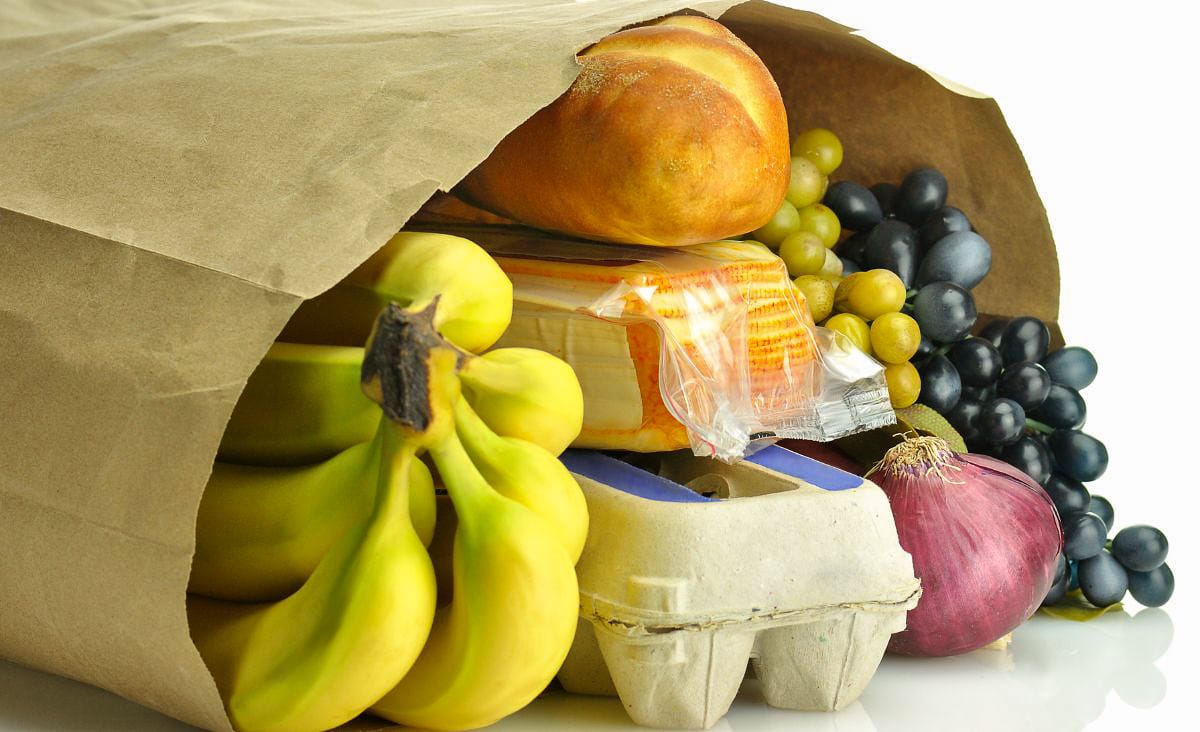How to Keep Food Fresh Longer: Easy Tips That Actually Work
Tired of spoiled produce and wasted groceries? Learn how to keep food fresh longer with simple storage tips that actually work.

Groceries are expensive—especially when you’re trying to buy healthy food for your family. If your toddler is on a plum-only kick or your older kids devour bananas like candy, you’ll do whatever it takes to keep those foods on hand. But between rising prices and fewer grocery runs, keeping things fresh can feel like an uphill battle.
I used to dread that mid-week moment when I’d open the fridge and find wilted lettuce or moldy grapes. It felt like tossing money right into the compost bin. But once I learned a few smart storage strategies, that all changed.
In this post, I’ll show you exactly how to keep food fresh longer using simple tricks that actually work—no special gadgets required.
How to Store Bananas So They Don’t Go Bad
Bananas are tricky because they ripen so quickly. To stretch their shelf life:
- Buy in stages. Choose a few ripe bananas for the next day or two, and grab the rest slightly under-ripe.
- Refrigerate the green ones. Cold temperatures slow down the ripening enzymes.
- Rotate as needed. As you eat the ripe bananas, pull one from the fridge. It’ll ripen in a day or two at room temperature.
Tip: Don’t store ripe bananas near apples or avocados—those give off ethylene gas, which speeds ripening.
How to Keep Apples Crisp and Crunchy
Apples last the longest in the fridge—ideally at or below 40°F. No room in there? If you’re storing apples long-term, check out this guide to storing produce for winter for cellar-style tips that work in any home.
Heads up: Keep apples away from other produce if you can. Like bananas, they emit ethylene gas.
How to Keep Grapes Fresh in the Fridge
Want firm, juicy grapes all week long?
- Keep them dry. Don’t wash until right before eating.
- Use breathable bags. Store grapes in a perforated plastic bag or a mesh produce bag.
- Refrigerate immediately. They’ll last a week or more if stored properly.
A Simple Way to Store Asparagus
Asparagus is delicate and doesn’t stay fresh for long—but you can stretch its life just a bit.
- Trim the ends and store upright in a glass jar with about 1″ of water.
- Loosely cover the tops with a plastic bag and refrigerate.
This method mimics how it’s kept at the market and makes a big difference in taste and texture.
How to Store Lettuce Without It Going Limp
Lettuce loves two things: being dry and being cold. A salad spinner makes that possible.
- Soak limp or wilted leaves in cold water for 20–30 minutes to perk them up.
- Dry thoroughly with a salad spinner or towel.
- Roll in a paper towel (or cloth towel), tuck into a zip-top bag, and store in the fridge.
Tip: Change out the towel every few days if it gets damp. This method keeps lettuce fresh for up to two weeks.
Want to make your fresh herbs last just as long? Here’s how to store herbs for culinary and medicinal use so nothing goes to waste.
Best Way to Store Onions Without Sprouting
Onions do best in a cool, dry, dark place. Ideally, that means 40–50°F with some air circulation.
- Store in pantyhose, mesh bags, or baskets.
- Keep them away from potatoes—storing them together can cause both to spoil faster.
You’ll find more helpful tips in my full post on storing produce for a long winter.
How to Keep Bread Fresh (Especially Homemade Bread)
Fresh-baked bread is the best—but also the fastest to go stale. Skip the plastic bag and try this instead:
- Store unsliced bread cut-side-down on a wooden board or in a paper bag with the top loosely folded.
- Want to go reusable? Try making your own linen bread bags (this DIY linen bag tutorial walks you through it).
Tip: Don’t store bread in the fridge—it dries out faster.
Where to Store Milk for Maximum Freshness
Most fridge doors are not cold enough to keep milk fresh for long. Instead:
- Keep milk toward the back of the fridge. That’s the coldest, most stable spot.
- Buy smaller containers. Half-gallons sour slower once opened compared to full gallons.
Also, don’t forget to save your empty milk jugs for winter gardening projects.
Frequently Asked Questions About Food Storage
Still wondering how to get more mileage out of your groceries? These answers might help.
Want your groceries to last longer? Save these smart storage tips to make every trip to the store stretch a little further.

A little extra effort in how you store your food can save you serious money, especially when you’re buying fresh produce and baking from scratch. Whether you shop weekly or just want to stop tossing wilted lettuce, these tips are easy to try—and they work.
Looking for more creative ways to cut waste at home? These DIY reusable tote ideas are practical, eco-friendly, and perfect for everyday use.
Have a favorite food-saving trick I didn’t mention? I’d love to hear it! Drop it in the comments below or pin this post for later.

Just found your blog. I like it so far. Thank you for spending the time on it for us..
You are so welcome Alexandra! I am so happy to have you here!
Hi a tip from my Grandma if you have limp letuce place in cold water with a lump of coal, wash the coal first, and leave for an hour or so it crisps up beautifly. Then put in a tea towel and shack out the water leave in the tea towel until you use it. It realy works.
Great tip. Thanks Chris!